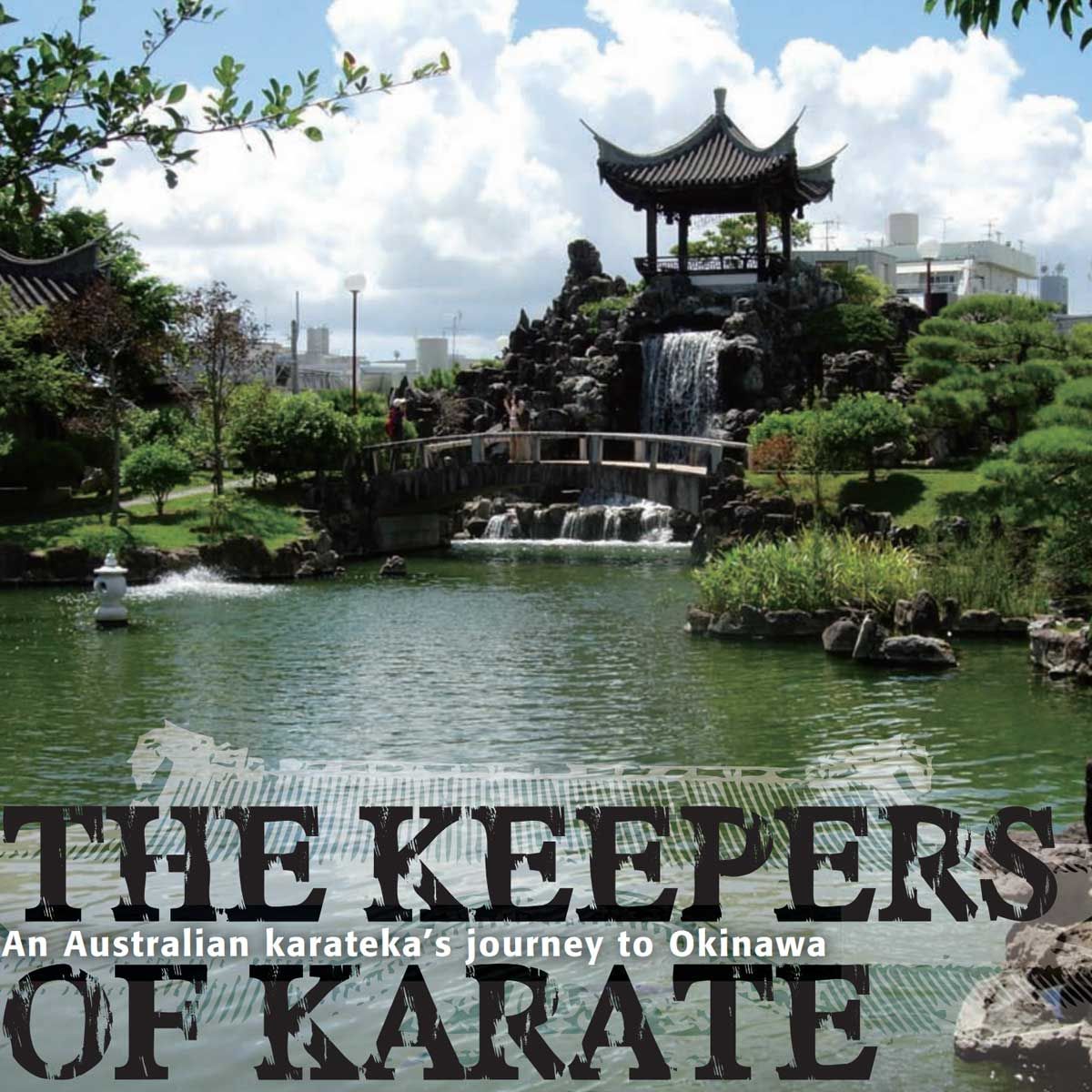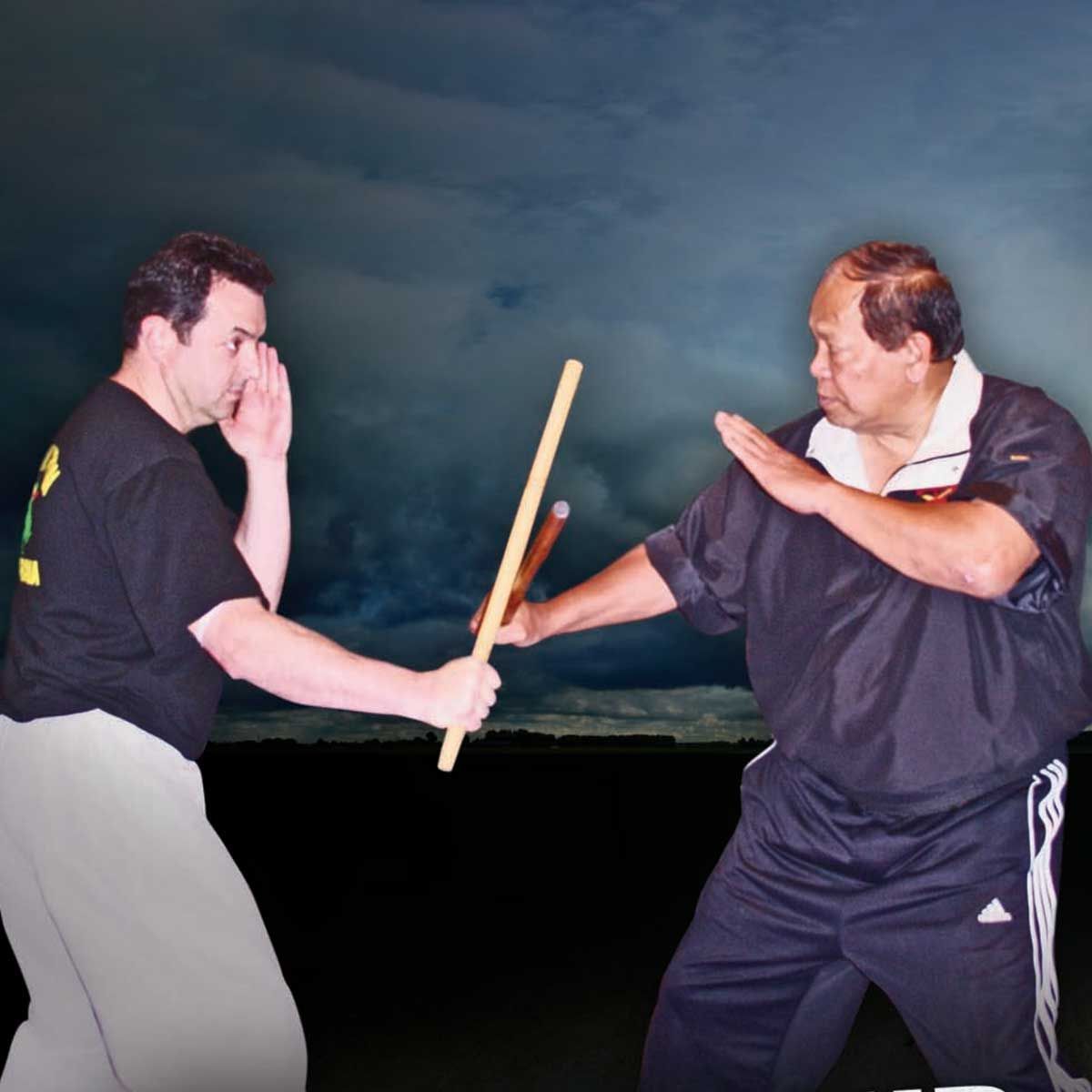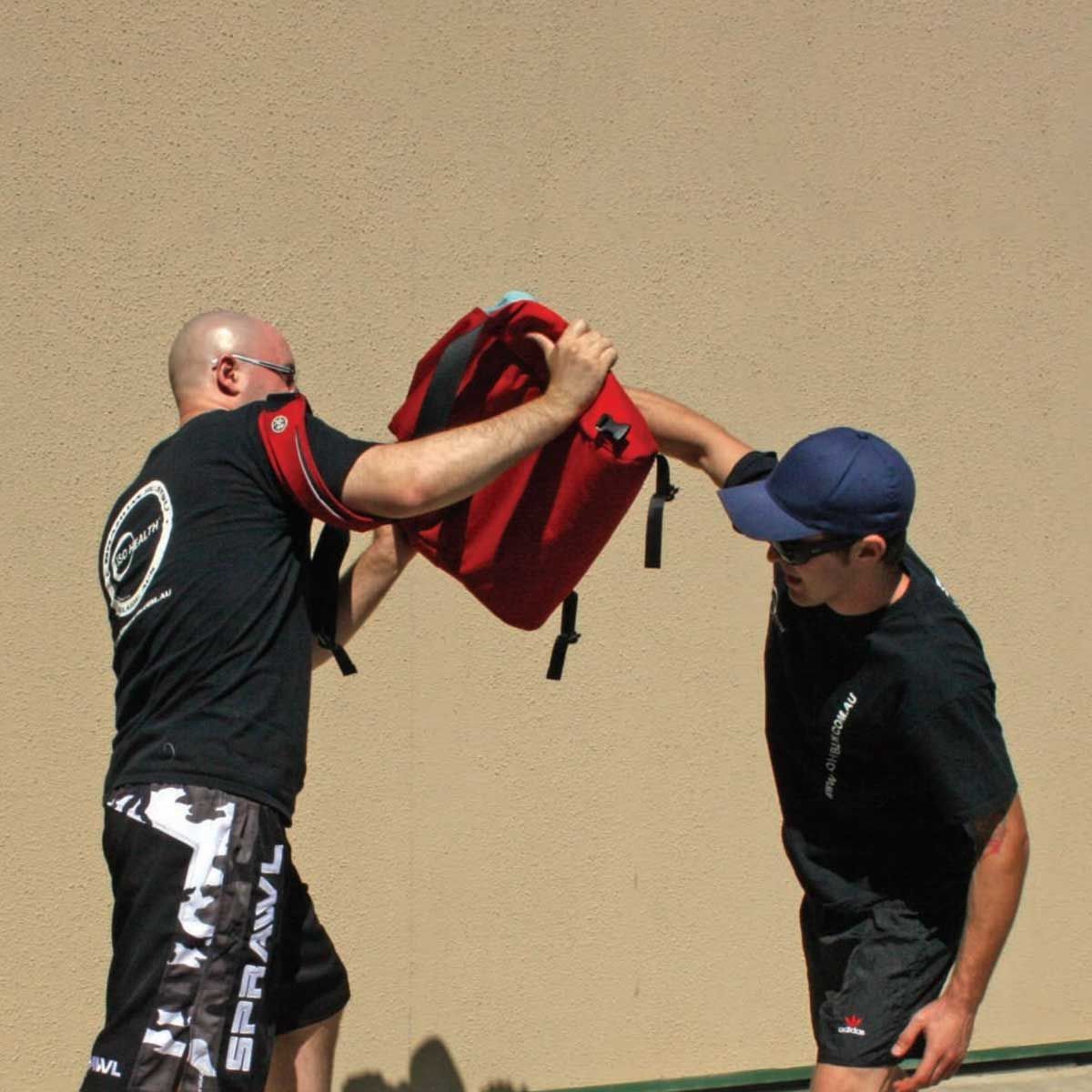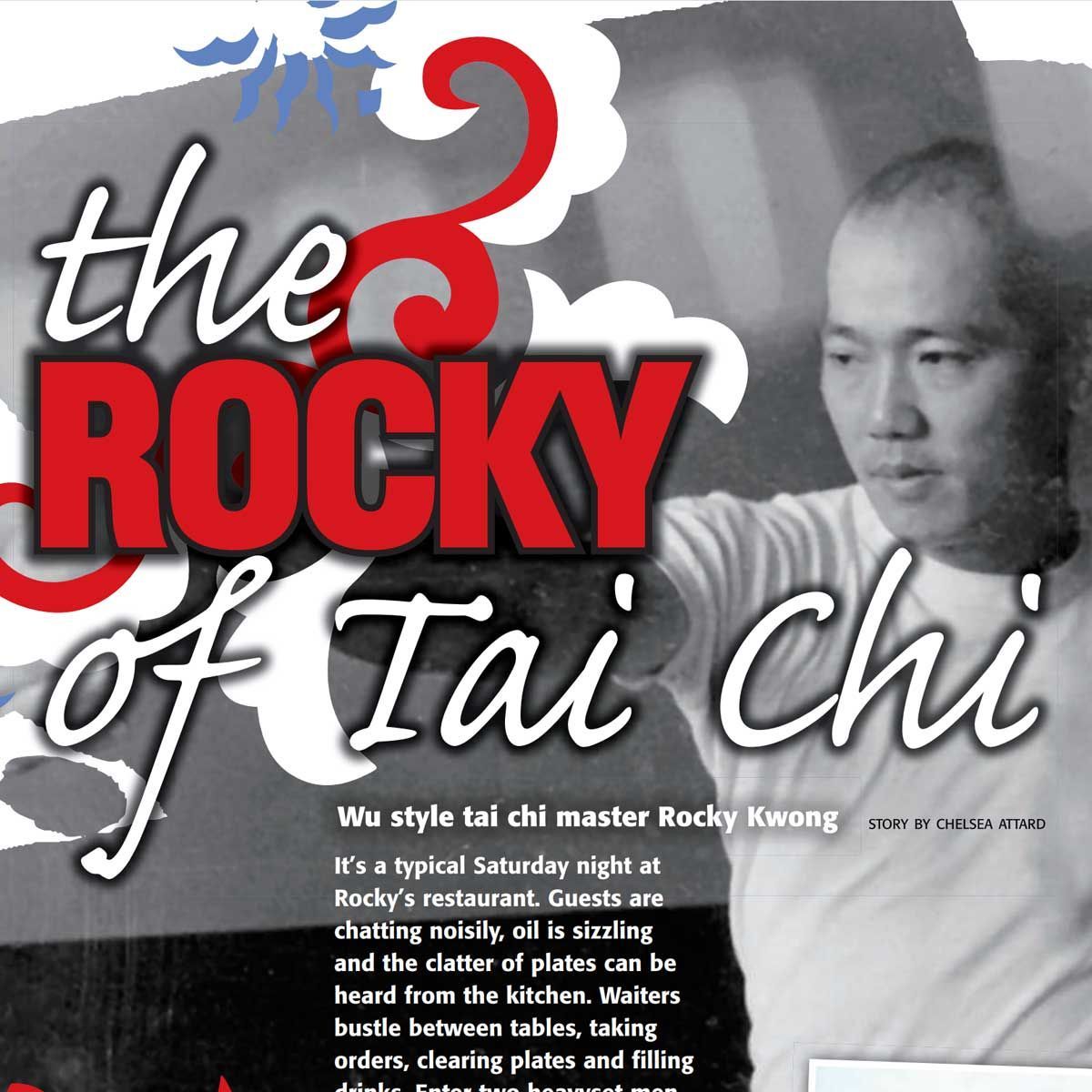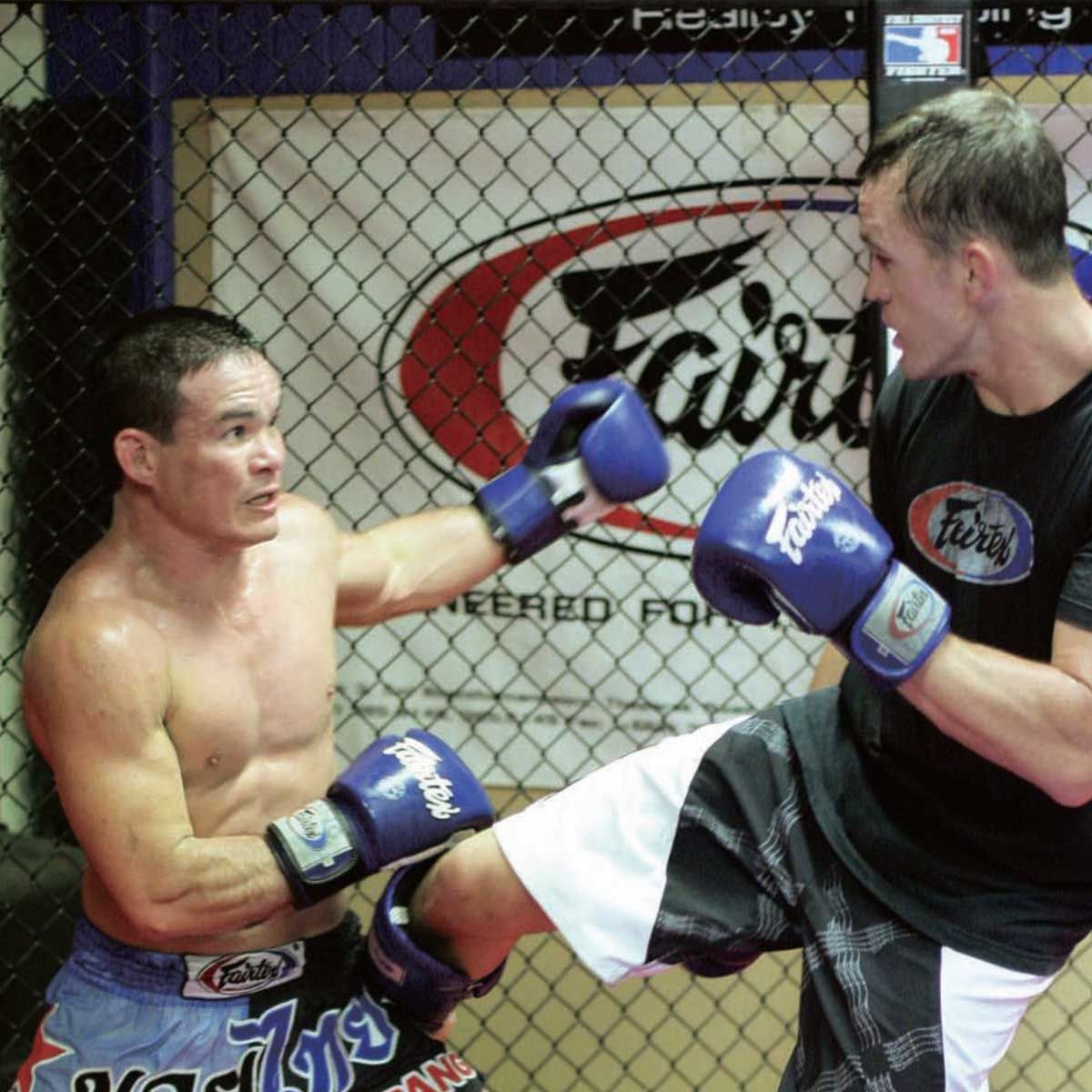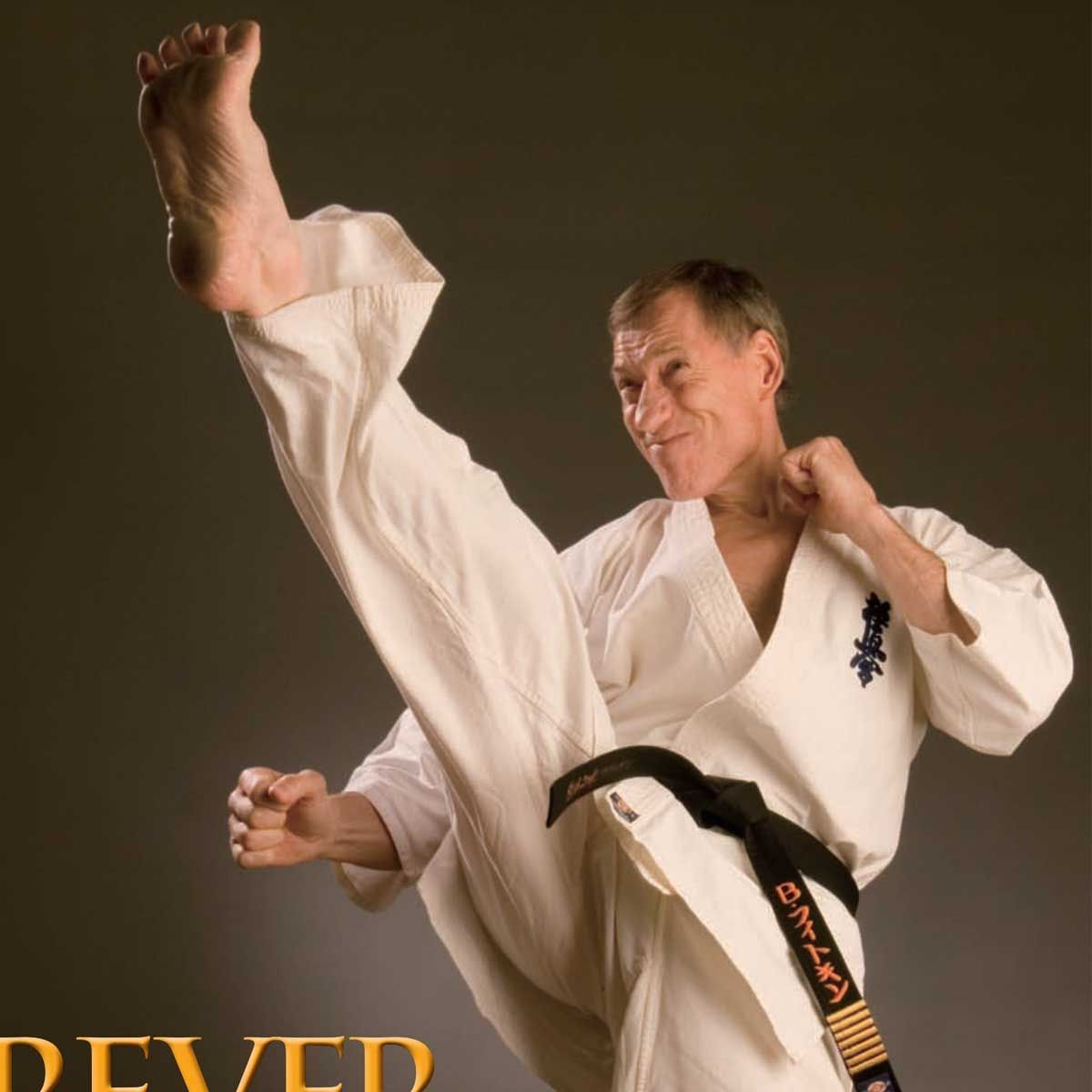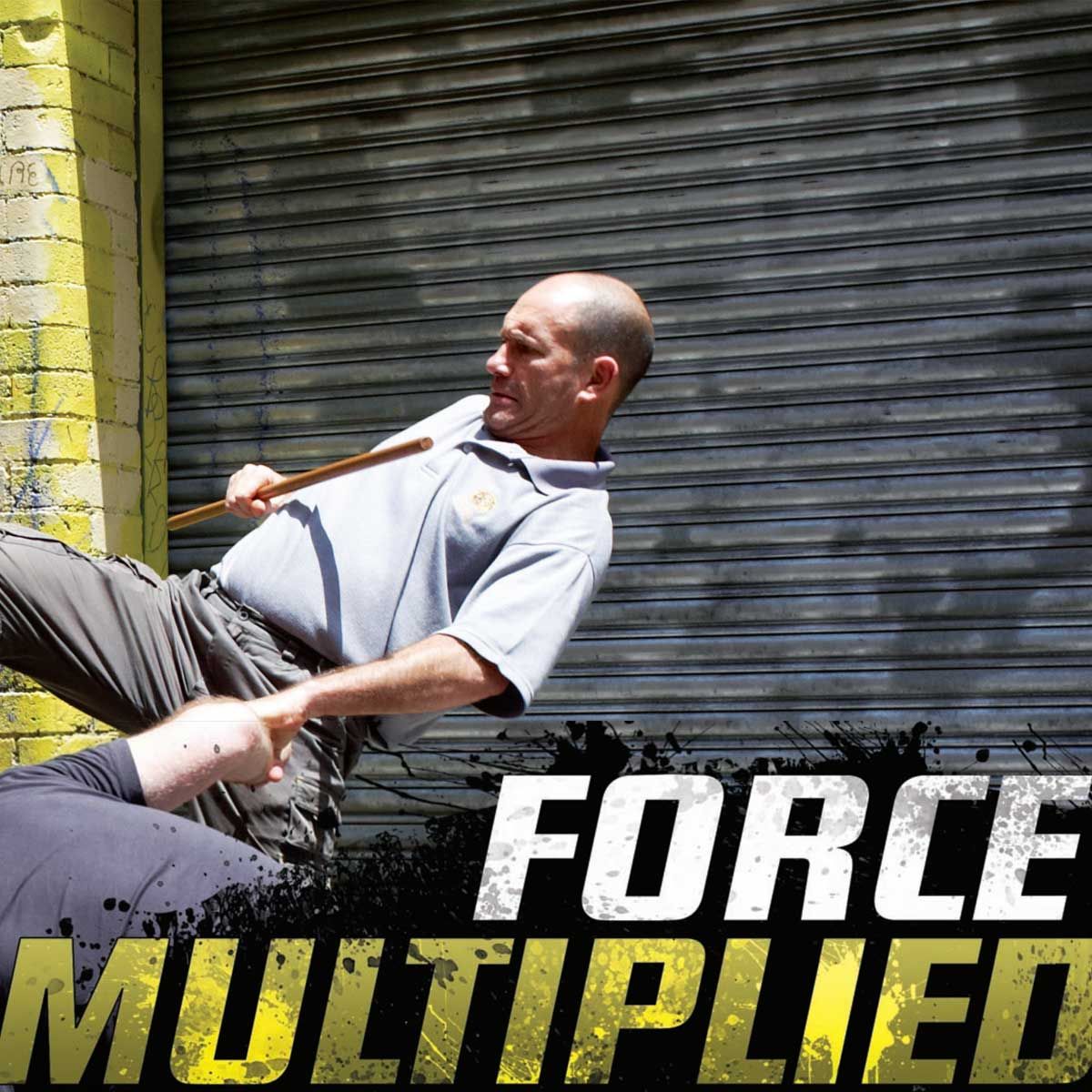
Fitness Tips To Get You Moving
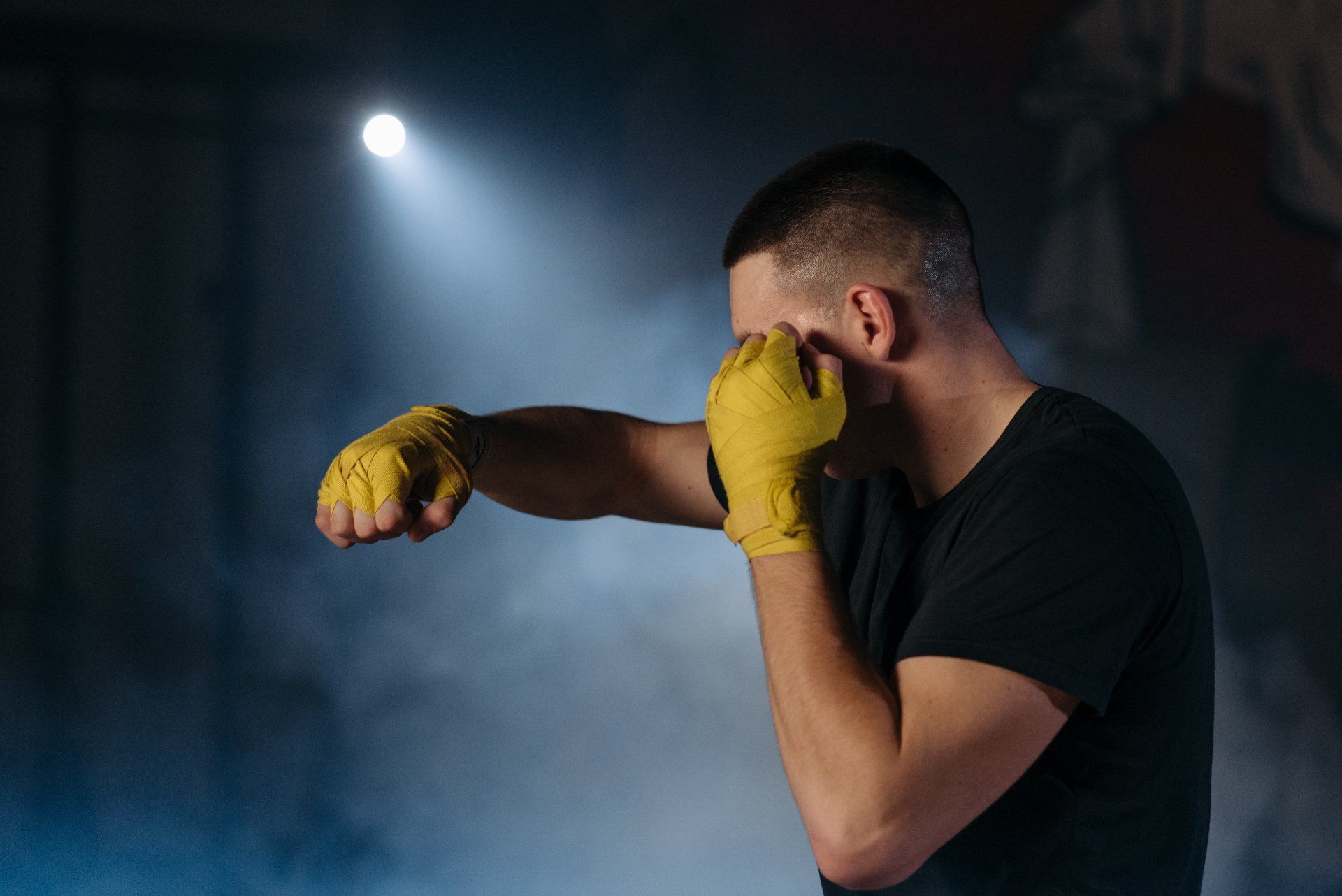
POWER BY PAVEL -
10 commandments of fight fitness with Pavel Tsatsouline
On the mat with one of the world’s most renowned strength and conditioning coaches for fighters offers his 10 Commandments for Fighting Fitness’.
Boston, USA, is a hard town and Steve Baccari is as hard as they come. His old boxing coach used to tell him, “When brute force doesn’t work, you just think you aren’t using enough.” Steve knows a thing or two about force. He is one of the smartest and most successful boxing, BJJ and MMA strength and conditioning coaches you will ever meet. I have been to Steve’s basement and he showed me a thick stack of notebooks going back a couple of decades. Over the course of his career he has tried everything and ruthlessly eliminated what did not work. Steve Baccari, RKC has kindly agreed to contribute to this column. Following are his ‘10 Commandments of Fighting Fitness’. Do not be misled by the brevity of this article. It took the man over 20 years, blood, sweat and brain cells to figure these things out, so pay attention.
1 - You can’t out-condition the dinner table If you don’t believe this, try the following experiment. Eat your favourite junk food snack. Time yourself to see how long it took to eat it — most likely, two minutes. Then check how many calories it is — say, 250. Now get on a treadmill and see how long it takes to burn those calories. I think you will agree this is not a viable method to get rid of excess calories, so start your exercise by pushing yourself away from the dinner table and save your energy for more productive training.
2- Joint mobility comes before flexibility or agility Before you can be truly flixible you have to be able to get your joints through a full range of motion. Start your days with [Pavel’s] Super Joints. [Joint mobility training is making progressively larger joint movements at a medium speed. Arm circles or back bends are examples – Pavel]
3- Work pure strength or what Pavel calls ‘slow strength’
The ability to generate maximum tension over a given period of time. I think this is the missing link in 95 per cent of the strength and conditioning programs being used by fighters. The programs that they do use should be called conditioning and more conditioning routines, because they never work on pure strength. Whether you use your bodyweight, a barbell or kettlebells, the protocol is the same: slow, grinding movements with maximum resistance in a low-repetition range with long rest intervals.
4 - Practise spinal decompression If you are performing these heavy grinding lifts, you should finish your training session with a spinal decompression exercise. You can hang off a pull-up bar or hang by your feet with inversion boots. I can’t give you the scientific reasons behind the effectiveness of this drill, but I can honesty say it has helped every single athlete I have shown it to.
5 - Raise the groove (GTG) This the most effective method of strength training for a fighter and, in my opinion, the only productive way a fighter can effectively increase his overall strength without over-training. [GTG refers to doing easy sets of an exercise throughout the day. For instance, if you can do 10 one-legged squats or pistols, do sets of 3–5 every hour or so. – Pavel]
6- Don’t overdo flexibility You only need slightly more flexibility than your sport requires so forget doing the hot yoga class.
7 - Power starts with strength Power is strength multiplied by speed, so unless you’re already super strong, don’t talk to me about plyometrics.
8 - Never work out, but practice Webster’s dictionary defines practice as “repeated exercise to improve a skill”. Sweat is a by-product of practices, not the purpose. Try to remember this the next time you are training.
9 - Climb the ladder The best way to increase exercise volume without it turning into a mindless workout is the ladder. [A ‘ladder’ means going up in reps every set, then starting over. For instance, you would do one, two, three, four, five pull-ups, then start over at one again. I have explained this, and several other concepts Steve mentions, in depth in my previous columns. The ones I have not covered I will address in the future. – Pavel]
10 - More is not better — it’s just more Focus on what you need to improve on, not what you like to do — they are rarely the same things. I will let UFC fighter Joe Lauzon wrap it up: “While I was training with Steve Maze for the fight with Jens Pulver, it seemed like he pulled some different strength and conditioning routines out of the air. I was amazed at how good some of the things we were doing were. I assumed he was coming up with things on his own or just looking for ways to make me tired. Then one day he introduces me to another Steve, Steve Baccari.
He is a maniac when it comes to learning about strength and conditioning and has a ton of experience in training fighters and seeing what works best for combat athletes. Immediately, everything made sense. Baccari and Maze had worked with fighters together in the past and I was doing some of the same routines they had done. As time went on, Maze got Baccari more involved and it got to the point where I was working with Baccari pretty exclusively on the strength and conditioning side of things.
In only a few short months I noticed a drastic increase in both strength and conditioning. ‘When brute force doesn’t work, you just think you aren’t using enough’.”
Pavel is a former Soviet Special Forces physical training instructor, a subject matter expert to the US Secret Service and the US Navy SEALS and the author of cutting edge books such as The Naked Warrior and Super Joints, which address the joint mobility, ‘grease the groove’ and ladder concepts.
Gym Instructors / Business Owners obtain insurance from
https://www.gyminsurance.com.au/
Carving steel abs without sit-ups
Steel Abs, No Sit-ups with Pavel Tsatsouline
To build the kind of natural body armour you need for martial arts — or abs of steel, if you will — you don’t need sit-ups or crunches.
No, this is not your father’s ab routine! It could be your great-grandfather’s though. The tough old bird never heard of sit-ups or crunches, yet was solid as a rock. His secret was old fashioned heavy labour, logging or hefting a side of beef. No, you do not need to take on a rural second job to shred your six-pack — all you have to do is practise at least one of the fi ve full-body exercises outlined in this two-part article.
BELTLESS HALF SQUAT
Many Russian experts, as well as cutting-edge Western scientists such as Dr Mel Siff, insist that nothing beats heavy, full-body efforts such as deadlifts, clean-and-presses, etc. for building concrete midsections. Hardcore iron athletes agree. Steve Justa, the colorful author of Rock, Iron, Steel: The Book of Strength, favours heavy, high-rep half squats for bullet-proofing his torso. Justa reasons that the legs are the weak link in the full squats; in heavy partial squats, the load is evenly distributed between all the major muscles, including those of the trunk. The Nebraska strongman half-squats for three-to-four sets of 15 and 30 reps, with five minutes of rest in between. Load up a barbell inside a power rack. Start with a weight not heavier than your full-squat 1RM (one rep maximum weight) and plan to build up to huge poundages in a few months. Set up safety pins a foot or so below your lockout point. The walkout is an essential part of the squat. Wedge yourself under the bar, inhale, tense every muscle in your body, and squeeze the bar off the hooks. Carefully back out while breathing shallow and keeping your waist rock hard and pressurised. Then squat! ‘Hard’ means braced for a punch, not sucking in or bulging out! Mel Siff PhD, the author of Facts and Fallacies of Fitness, explains: “The abdominal muscles statically resist the tendency of the abdomen to bulge excessively when the Valsalva (breath-holding) manoeuvre is used during heavy lifting… and this is how they play a major role in contributing to trunk stability and so-called ‘core strength’. They assist in maintaining the pressure in the abdominal cavity to serve as a type of pneumatic cushion or corset for the spine during lifting…” In other words, your abs are your ‘virtual belt’ to protect your back.
Powerlifting guru Louie Simmons once correctly pointed out that bodybuilders suck their stomachs in when squatting and hurt their backs all the time as a result. Don’t! Every muscle contracts in a straight line. In the abdominals’ case, the straight line is drawn between your breast and pubic bones. So do not suck your stomach in, but instead form a flat wall. “In fact, the more strongly your abdominals are pulled in, the less stable your trunk can be during lifting,” continues Dr Siff, “so, if you are lifting any serious loads, you would be well advised to allow your body to do what it does naturally when it has to stabilise itself under any large or sudden loading — and that is to hold breath briefly and allow the abs to tense or distend slightly, without any deliberate attempt to change anything during any dynamic movement. This is what the world’s strongest weightlifters have been doing safely and powerfully for many decades, so why not take a page out of the books of the world’s fi nest practical experts?”
FRONT SQUAT
The last comment by Dr Siff brings us to the reason why weightlifters — we are talking Olympic weightlifters here, not just anyone who lifts iron — have their ab act together. Their secret is the front squat and other lifts that require racking a heavy barbell in front. The way we are built, the spinal erectors are simply unable to stabilise the spine when a heavy weight is supported in front. When a friend of mine, a powerlifter with a 700-pound squat, power-cleaned 225 pounds for the fi rst time he felt like ‘his upper abs were going to explode’. What he was experiencing was the downward pressure of the parachute-shaped diaphragm muscle that separates the lungs and the stomach. The diaphragm was pushing down like a hydraulic lift to build up the pressure in the abdomen and to prevent the spine from collapsing forward. And the abs, as explained earlier, were containing the guts from spilling and getting the mother of all workouts. Front-squatting quickly teaches one to pressurise the abdomen the hard way. All you have to do is to remember that ‘gut feeling’ and apply this elite skill to other lifts for greater strength, a well protected back, and a killer ab workout. To state the obvious, start front-squatting to rock bottom, for many sets of one, two, or three reps. Without expanding on this question as it would take us on a tangent, partial front squats as well as high-rep front squats are against the Party line.
BELTLESS HALF DEADLIFT
There is a good reason Masters World Powerlifting Champion Marty Gallagher calls the deadlift ‘the reverse sit-up’. The deadlift ranks among the best midsection exercises. It operates on the same principle as the squat: the abs get a workout by containing the intra-abdominal pressure from a heavy poundage. As with the back squat, limiting the range of motion will increase the stress on the midsection. Set up your barbell inside the power rack at your knee level. About three quarters of your maximum deadlift from the fl oor will be a good starting weight. Expect your poundage to skyrocket within weeks; then you will have to strap yourself in. Yes, I am letting you cheat with straps because otherwise you will not be able to hold on to your pull for reps. Don’t get used to it. Take a breath into your stomach, pull up your butt, pressurise, brace your whole body, and pull. Do not arch your back but keep it fl at; this encourages a better ab contraction. Also keep your weight evenly distributed on your feet rather than towards your heels as usual. Push your feet straight through the platform and drive hard with your glutes. Pick up a rhythm and knock off your reps. Lower the bell quickly but precisely; don’t round your back or rock on your toes, and push your butt back on the way down. It is critical to your survival that you do not lose your air during this lift, so breathe shallow and keep a bubble in your belly at all times! With both deadlifts and squats you should hardly feel your back but be very aware of your tense abs and obliques. Don’t suck them in; don’t push them out. Build a fl at wall against the internal pressure. And be aware that this type of exercise is not for people with hypertension or heart problems. Abdominal power to you!
ASK AN EXPERT with Adam Staneck
How to combine weight training with martial arts
Lift Heavy, Eat Meat
The question: “I’m wanting to know what kind of weight exercises are best to do when training combined with martial arts. Speed is a key element of martial arts but building mass can make us slower. Help!”
THE ANSWER Before answering this question, it is important to first determine what you are really training for. Some questions to ask yourself: what is my training goal in the martial arts? What is my strength and conditioning training goal? What are my areas of weakness?
In order to answer your question as fully as possible, I would require the above information and more, including which martial arts you participate in and your experience level in both martial arts and strength and conditioning. Therefore, my answer will be very general, yet you should be able to apply the principles to your training. Firstly, you’re correct that speed is a key element in the martial arts, however, speed alone is all but useless. A few other key areas to consider include accuracy, strength, co-ordination, balance and power. A boxer who is fast but has no accuracy will be very inefficient, a tai chi practitioner with no balance will never excel at the higher levels of the art, a karateka cannot hope to perform kata well without co-ordination. Therefore, when supplementing your martial arts training with a strength and conditioning regimen, it’s essential to take a holistic approach.
Focus upon your weaknesses and practise the things that you don’t like to practise or aren’t good at. That is where you will make your gains. My experience suggests the most lacking aspect of martial artists is a solid strength base. This can only be developed over time and it is very rare that the movements performed in the dojo, kwoon or otherwise are sufficient. Therefore, my recommendation regarding which movements to perform is to start with the basic slow lifts (deadlift, squat, press) and progress to the Olympic lifts and their derivatives (clean, jerk, snatch). The slow lifts will develop the strength base that was mentioned earlier and the Olympic lifts will add speed, coordination, balance, agility and develop a powerful athlete. (You can find numerous training programs online and analysis of these is far beyond the scope of this reply. Search, experiment and perhaps employ a trainer.) Building mass and developing power and strength are not the same. They are related, yet a well-designed strength and conditioning program will only add muscle mass to the level that it is required.
As martial artists often compete in weight classes it is important to develop a high strength-to-weight and power-to weight ratio rather than simply increasing size. This is different to, say, a rugby player who might want to increase overall mass as well as athletic prowess. So, a martial artists program should build lean muscle mass, remove excess body fat and develop strength and power (among other aspects of fitness) without excessive weight gain, if any. It is important to understand that a strength and conditioning program alone will not result in significant size gains without the requisite nutritional practices (i.e. consuming an outrageous amount of calories) and adequate recovery (e.g. active rest, sleep and massage). Choose functional movements, preferably the traditional slow lifts and the Olympics lifts, supplement with some plyometric training (once you have built a decent strength base) and be sure that your martial arts training is covering all of the skills that you require. This should be sufficient but remember to tweak your training whenever you hit a plateau. That said, I expect that you will have to structure your strength and conditioning around your martial arts training. How often you train will be determined by your lifestyle; work, recreation and other commitments may dictate your training opportunities.
Your body can cope with a significant load (just consider professional athletes for a moment) so it is hard to over train, but by the same token it’s very easy to ‘under-recover’. I would generally recommend three or four strength and conditioning sessions per week in addition to any martial arts training (note: this is general and may not suit you). Start with a basic, periodised strength program and go from there. It is difficult to define work periods and rest periods without knowing more about you. You can train strength and conditioning and martial arts on the same day, or you can train on consecutive days, but you will need days off. Ultimately, you will have to experiment to learn what works for you. In the simplest terms: lift heavy, eat meat and sleep well!
THE AUTHOR
Adam Stanecki is a fitness coach and joint-owner of CrossFit Victoria. He holds numerous certifications including CrossFit Level 2, AWF Level 1 and ASCA Level 1. Adam focuses his training on general physical preparedness and injury prevention and has trained MMA fighters, Australian Defence Force personnel and the general public to elite levels.
Building ‘body armour’ without sit-ups
DIY Body Armour with Pavel Tsatsouline
To build the kind of natural body armour you need for martial arts you don’t need sit-ups or crunches — you need these hardcore exercises!
PUNCH PLANK This traditional karate drill will get your obliques’ undivided attention and teach you to ‘knit’ your full body strength together for punches. Assume the top of the pushup position on your fi sts (only on the fi rst two knuckles). Your feet may not be wider than your shoulders. Lift one hand and hold it ‘on guard’ by your face. Stay. Keep your shoulders parallel to the deck – this is very hard and extremely important. Even a slight twist reduces the effectiveness of this anti-rotation exercise. A few performance tips: Look straight down, as you should in all planks. Lock your ribcage down towards your pelvis by shortening your obliques and lats. Cramp the pec on the side of the loaded fist and load the opposite foot. Breathe shallowly and switch fists before you lose the perfect alignment. It is likely that you will only be able to hold the punch plank for a couple of seconds at first. No problem, just do extra sets to get more ‘time under tension’ under your belt.
FULL-CONTACT PLANK Drop into a regular plank, get tight, breathe shallowly and ask your sparring partner give you some ‘tough love’ of carefully placed kicks, punches and shoves against your midsection, armpits and thighs to stimulate greater tension. I’m sure you will not have to ask twice. According to premier sports physical therapist Gray Cook, carefully kicking the soles of bare feet will recruit various intrinsic muscles like transverse abdominis (TVA).
CRUNCH CHIN-UP I dare you to fi nd a single person who is good at chin-ups — 25 dead hangs with the chin clearing the bar on the top are considered good — and does not have abs to kill for. You just cannot help working your abs hard during chins. You can make the chinup an even more effective ab developer if you follow three simple rules: First, stretch your abs on the bottom to get a complete extension. Second, ‘plank’ your body on the way up. Third, perform a sort of reverse crunch and ‘ball up’ as your chin is clearing the bar. Steve Baccari, RKC, strength and conditioning coach to UFC fighter Joe Lauzon, puts the crunch chin-up on his very short list of highly effective exercises.
HEADSTAND LEG-RAISE This bodyweight drill is a favourite of MMA legend Frank Shamrock. Kneel and place the top of your head — not your forehead — and your hands on a reasonably fi rm mat. Your head and your hands should form an equal-sided triangle, at least in the beginning. Walk your feet towards your COURTESY head while keeping your legs straight and together until your torso is almost upside down. Take a breath, tighten up your whole body, press your hands into the fl oor, and slowly lift your straight legs until they are vertical. You are in a headstand. If you overbalance, be prepared to tuck in your chin and roll forward. Now slowly lower the legs down to the deck under complete control. If you fall through the last inch or two, you are making the exercise a lot easier. Move at ‘tai chi speed’, as my colleague Dr Mark Cheng, RKC TL, says. By now you must be asking this question: this move is the opposite of a sit-up – an inverted, reverse hyper’ really – where do the abs come in?
Try it and you will find out. A tip: Press harder with your hands when your feet are just clearing the floor or are about to hit the floor on the way down. Practise every day in the beginning of your workout for multiple singles and later for sets of up to five reps. Here are six harder variations (if you ever need them). First is to move your hands forward almost in line with your head. The leverage goes down the drain, plus the balance gets trickier. Your abs will cry uncle. The second calls for clasping your hands behind your head and resting your forearms on the floor. It is harder because without hand pressure you will have a harder time applying your shoulder strength.
For the third, very shoulder intensive version, keep your arms straight and push off your punching knuckles. The position looks like an inverted frontal deltoid raise. The fourth optional technique is to lift and lower your legs slightly off centre. Start with your feet level with one shoulder rather than your head and lift them towards the centre until they are vertical. Lower your feet to the other side. You will notice that you have to press harder with one hand to get the job done. Finally, you may choose to hold a pair of shoes, a tennis ball, or some other object between your ankles. Power to your abs, power to you in the ring!
See Our Other Recommended Issues
-
Champion of The World
ButtonInternational Kickboxer Magazine
-
End of The Iron Age
ButtonInternational Kickboxer Magazine
-
From Goju to Guro
ButtonBlitz Magazine
-
Purple Reign
ButtonInternational Kickboxer Magazine
-
Man of Mastery
ButtonBlitz Magazine
-
Kung Fu for Life
ButtonBlitz Magazine
-
K1 - Superstars
ButtonInternational Kickboxer Magazine
-
Evolution Comes to Melbourne
ButtonInternational Kickboxer Magazine
-
Kung Fu Dynamo
ButtonBlitz Magazine
-
Man of Mastery
ButtonBlitz Magazine
-
Holding Court
ButtonBlitz Magazine
-
IK's First Champion!
ButtonInternational Kickboxer Magazine


